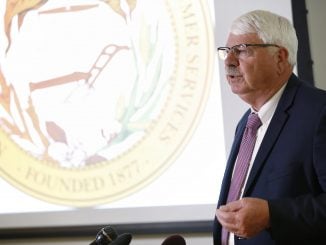
RALEIGH — The North Carolina Department of Public Instruction is refuting the state auditor’s report on school truancy that occurred during the pandemic, calling the report error-filled and “egregious.”
“Given the unprecedented nature and magnitude of errors of this audit, NCDPI felt it necessary to respond directly to this egregious report,” NCDPI’s rebuttal states.
NCDPI, headed by State Superintendent Catherine Truitt, criticized the OSA for wasting “well over 1,000 hours of PSU and NCDPI’s time and for wasting the $350,000 in COVID-19 relief funds by producing a report that contained no useful findings for lawmakers.”
“Instead of producing a report providing usable recommendations to schools, NCDPI, and the General Assembly, OSA engaged six PSUs and NCDPI in a years-long runaround chasing data that was not relevant to the policies and COVID-19 impacts they were charged with analyzing,” NCPDI said in its conclusion.
NCDPI added, “This untimely report is a missed opportunity to provide meaningful feedback on attendance policies and has robbed our PSUs of an opportunity to adjust their policies during the COVID-19 pandemic.”
The rebuttal also said that the OSA “went beyond the scope of the General Assembly’s request” and that “OSA staff did not understand the nomenclature regarding school attendance policies and therefore the data,” which resulted in school districts and NCDPI being “improperly censured.”
The audit conducted by the OSA was state-ordered in 2021 through passage of Session Law 2021-180, the 2021 Appropriations Bill. The law gave the OSA $350,00 to look at public school attendance and truancy policies used over the 2021-2022 school year in an effort to determine the impact of the COVID-19 pandemic. Specifically, the law says the OSA was to conduct an analysis and give recommendations to “remediate student absenteeism.”
Per the law, the OSA was over a year and three months late in delivering the audit report which was supposed to be turned over to legislative education committees and the legislature’s fiscal research division by June 30, 2022.
According to the OSA’s summary report findings, NCDPI “could not provide the student attendance data” the OSA wanted for analysis. The OSA also claims that five of the six schools analyzed had incomplete or inaccurate data yet auditors still performed “some procedures” on the six selected schools.
Six schools out of the state’s 115 districts were randomly selected by the OSA as directed by law which included two small, two medium, and two large-sized public school units (PSUs).
The large school districts selected were Charlotte-Mecklenburg Schools and Winston-Salem/Forsyth County Schools. Medium-sized school districts included Johnston County and Robeson County and the small school districts were Henderson County and Hyde County Schools.
The OSA’s report found all six districts didn’t comply with the state truancy laws during the 2020-21 school year. It is unclear why OSA reported on the 2020-21 year when Session Law 2021-80 clearly stated the analysis was to be conducted on the 2021-22 school year.
The OSA’s main findings appeared to focus on “chronic absentee” student data, which NCDPI says was part of the problem. In its response to the OSA, NCDPI also detailed the differences between attendance accuracy, chronic absenteeism, excusals, and truancy.
NCDPI explained that chronic absenteeism was different during the pandemic year in the OSA audit and that truancy laws only apply to unexcused absences; however, chronic absences could be excused. In other words, truancy cannot be equated with chronic absenteeism. These distinctions where what NCDPI says the OSA did not understand and therefore the audit’s findings were “largely without merit.”
According to NCPDI, the OSA was provided with the student attendance data they requested “but did not understand how to use it, even after multiple attempts to explain it” both by NCPDI and the PSUs.
Additionally, the data requested was “also readily available in more usable formats without requiring OSA analysis.” One such example is a white paper on attendance trends during the 2020-21 school year which was published by NCDPI’s Office of Learning Recovery in August 2022.
The OSA issued a statement defending the audit following NCDPI’s lengthy response. In the statement, the OSA made accusations that it was the NCPDI staff “who did not understand” the attendance data and that NCDPI had not done the correct calculations.
The statement also claimed the initial delays in obtaining data were not due to a lack of understanding of attendance calculations on their part but were instead issues with missing data, duplicate information, and discrepancies with NCDPI’s own reports.
The OSA statement refuted the idea their audit did not include actionable recommendations.
When asked about OSA’s latest statement, NCDPI said the department “shared in great detail its response to the OSA analysis, and we stand by that response.”



